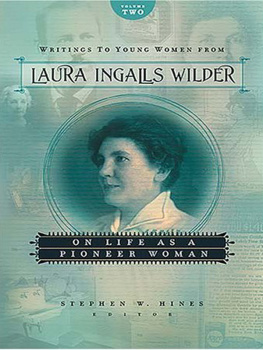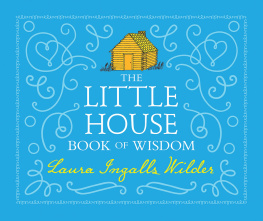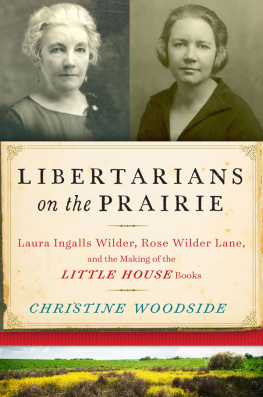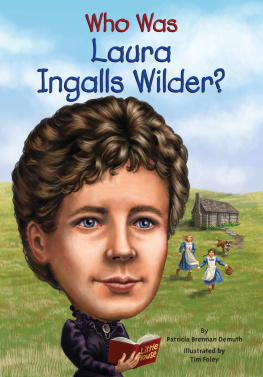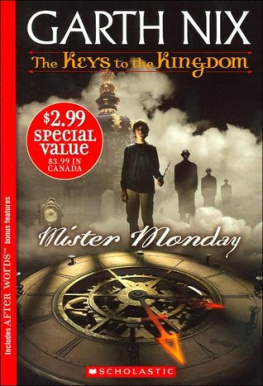Garth Williams
AMERICAN ILLUSTRATOR
A Life
ELIZABETH K. WALLACE & JAMES D. WALLACE

Garth Williams
Copyright 2016 by James D. Wallace and Elizabeth K. Wallace
FIRST EDITION
All rights reserved. No part of this book may be reproduced in any form or by any electronic or mechanical means, including information storage and retrieval systems, without permission in writing from the publisher, except by a reviewer who may quote brief passages in a review.
For photo credits, please see permission page at the end of the book.
Library of Congress Cataloging-in-Publication Data On File
Hardcover: 9780825307959
Ebook: 9780825307249
For inquiries about volume orders, please contact:
Beaufort Books
27 West 20th Street, Suite 1102
New York, NY 10011
sales@beaufortbooks.com
Published in the United States by Beaufort Books
www.beaufortbooks.com
Distributed by Midpoint Trade Books
www.midpointtrade.com
Printed in the United States of America
Interior design by Mark Karis
Cover Design by Michael Short
We dedicate this book to the grandchildrenWilliams and our own.
Introduction
Millions of readers can be forgiven for knowing the workbut not the nameof Garth Williams. After all, as his New York Times obituary observed, it was often his fate to remain unrecognized as the illustrator of countless childrens classics. By 2004, Stuart Little had sold 3,182,566 copies. And this was just one of the more than eighty books done by Williams. His career was prolific and very wide-ranging: for E. B. White, he famously drew Stuart Little, Charlotte, and Wilbur. He illustrated all of the Laura Ingalls Wilder books. He drew many, many other animal books, including innumerable, still cherished titles for the Little Golden Books and several seriesGeorge Seldens The Cricket in Times Square and all its sequels, four of the Miss Bianca books by Margery Sharp, and Randall Jarrells The Gingerbread Rabbit.
So we could say that, without Williams contributions, Stuart Little would not have attained his trim, dapper appearance, Laura and Mary Ingalls would not have enjoyed their legacy, the adventures of Chester the Cricket and Harry the Cat would have seemed less vivid, and the travails of Wilbur the pig would not have gained their full existential weight. Miss Bianca would not have possessed her perfectly rendered nutshell chair. Even Frances, eponymous heroine of the series by Russell Hoban, would have been different: it was Williams idea that she be not a vole, as her author suggested, but a badger.
Yet how many readers would be able to name the artist whose pencil nudged all these famous characters to life? This, however, is the illustrators destiny: to create indelible characters, often beloved and remembered for generations, and yet to be forgotten by name for his extraordinary contribution. Who, after all, remembers John Tenniel as the illustrator of Alices Adventures in Wonderland? Who remembers that Ernest Shepard limned both Winnie the Pooh and Toad of Toad Hall? Illustration is the bastard child of the fine arts: often the offspring of rigorous artistic training and sheer inspiration, it is rarely perceived as a legitimate and freestanding creative art. This issue has received extensive attention in a biography of Norman Rockwell by Deborah Solomon. Especially when an artist draws for someone else, he is seen merely to express, to supplement, or to serve the authors words.
But this is not entirely the case. Great illustrations advance the story. They not only enrich the mood of the text, but they also stress key themes. In the process, they become a kind of ghost writing. In addition, illustrations facilitate the readers experience of psychological depth by providing visual cues that can be easily read and processed. They fill what one critic has called the conceptual gap between the authors expression and the readers imagination, resulting in experiences that can be broadly disseminated. In Williams illustration, the tragicomic woe of Wilbur, bewailing a pigs fate, becomes a predicament shared and treasured by millions. Moreover, the ability to illustrate animals is an especially powerful, even visionary talent. Among the best animal illustrators, it is difficult to say where the animal lets off and the human beginsand vice versa. Such artists allow us to see ourselves living not in opposition to, but on a continuum with our animal brothers.
Garth Williams illustrations accomplish all this and more. Yet his biography is the story of a mana genius to be surewho never fully enjoyed the sense of his own accomplishment. Having been trained in Europe, in an old-world setting that privileged highbrow, serious art over the popular, he always thought that one day he would be a real artist. Driven by financial exigencies for most of his life, he tended to Comments like this continued throughout his career, with honors and awards attending him in his later years, and his subsequent reputation as the great Garth Williams now seems destined to endure.
Over time, Williams fans have not needed the critics to tell them the exact nature of his brilliance. Those who knew and loved his illustrations as children remain fiercely loyal to him as adults, making web pages, creating fan sites, and even posting a YouTube video about his art. Though some of his works are no longer in print, there is a brisk trade in second hand copies of books like A Garth Williams Treasury of Best-Loved Golden Books (2007)which is due for a reprint. His drawings have such magic that anyone who sees them can remember them well after childhood is long gone, and [they leave] them with a hunger to see them again, is a reverent comment from one Williams devotee. But Williams appeal is not restricted to those of a certain age: in the twenty-first century the tiniest readers, including our own grandchildren, express a palpable enthusiasm for Mister Dog, the Little Fur Family, or The Kitten Who Thought He was a Mouse. Laura Ingalls Wilder enthusiasts form an especially ardent subset of the Garth Williams fan club: they cherish his drawings both as an integral part of the reading experience and as a body of documentary evidence of a life that really existed.
Scholars and art critics also cite Williams work for its notable artistic achievement: his black and white drawings are especially appreciated for their energetic use of line and for their classic technique used to capture a dynamic sense of movement. And the commercial world At this point, the art is evaluated at even higher prices. Garth Williams reputation is not limited to the US, either: with editions of his books still appearing regularly across Europe, he is especially beloved to this day in Japan. There his booksand tie-in merchandisesell briskly.
In short, it is certainly possible to claimbased on an unusually large body of extraordinary art, one that is widely recognized for its precise and telling use of detail sometimes verging on the surreal; its unusually skillful rendering of dynamic and energetic movement; and its ironic whimsy conveying emotion without sentimentalitythat Garth Williams was one of the most important illustrators of the twentieth century. Unlike Maurice Sendak, Garth Williams was never really a writer. Also unlike Sendak, he didnt express revolutionary ideas about childhood. Nonetheless, his drawings uniformly capture an original and distinct perspective of the animal world and they provide a unique understanding of the human-animal relation. Taking his cue from the best childrens writers, he made visible the secrets of animal life. This dynamic interchange of word and image was at its best in Williams work with Margaret Wise Brown. Though Browns best-known book,




